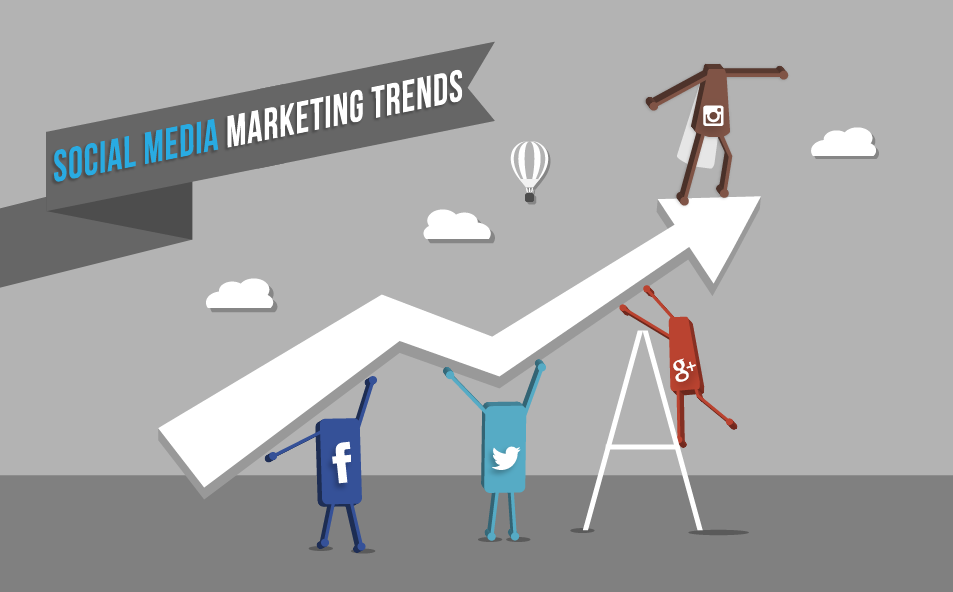For most marketers, social media strategy involves throwing some words in a box, posting and linking to their latest product. It's no surprise that this strategy is ineffective. The change-makers in the marketing industry do things a little differently. Top brands that achieve great success use these four social media marketing trends:
1. Brands Will Become Publishers
Brand publishing is the new content marketing. It's more authentic, it's more transparent and it keeps consumers engaged for longer periods of time by building relationships. And, unlike content marketing, brand publishing requires a little more tending to. Foolishly, some marketers believe content marketing exists solely to sell a product. AdWeek insists that all content exists to tell a story, no matter the platform—from tweet or blog post. So, 2014s content marketers will evolve into content publishers in 2015.Contently suggests a three-step process for brand publishing success.
- Choose a topic that your core audience is passionate about. Contently cites the beverage brand Red Bull as a leader in brand publishing because it has created an empire around extreme sports.
- Some brands have trouble with this step: commitment. Commit to the single topic that your audience is passionate about. Think about it, you don't see Red Bull wandering too far away from extreme sports and attempting to cover multiple topics at once. It wouldn't be effective.
- The third step is ownership. Own that topic like no other brand. Show consumers that your brand is the expert.
2. Video Will Extend Beyond YouTube
The year 2014 was all about video marketing on YouTube. Today, subtly branded video is popping up everywhere—on Facebook, on Vine and even in GIF form—meaning that short, attention-grabbing clips and videos won't be reserved to YouTube in 2015. Additionally, Facebook Newsroom reports that the social network averages about 1 billion video views each day, and in September 2014, Facebook released a "call to action tool" for publishers and content creators. The tool invites consumers to visit a website, make a purchase or view more branded or related videos in an organic, natural way.3. Instagram Advertising Will Expand
The forecast for paid social ads in 2015 is foggy. While many marketers put their money into paid social media ads, the return isn't what many would expect. According to Forrester, social media users do not engage with social content very often. Their findings were based on the study of 3 million user interactions with more than 2,500 brand posts on seven popular social networks. On six of those social networks, the brands that were studied achieved an engagement rate of less than 0.1 percent. This means that for every 1 million fans a brand has on Facebook, each post only has about 700 likes.But, the future isn't all that bleak for one growing social network: Instagram. Forrester reports that Instagram posts generated 58 times more engagement per follower than Facebook and 120 times more engagement on Twitter.
If your brand is not finding success on Facebook, try Instagram in 2015. The social network isn't reserved for youth-centric brands, either. Companies including General Electric and Ford Motor Company have found success on this network.
4. Image-Based Content
Pinterest, Instagram and Tumblr aren't only for selfies, home decor and recipes. The image based social media platforms are being taken by storm by small and large businesses to help businesses connect with their customers and fans. Visual stories help people identify with your organization. By showing off products, employees and events, you show you have a human side and allow your follower to get to know you a little better.5. Social Platform Diversity
Get your brand out there! Having your brand present on several social media channels allows you to connect with prospects and customers from all walks of life.A new research from GlobalWebIndex reveals that:
By 2014, an impressive 92 percent of internet users aged 16-64 said that they had an account on at least one of the 40 distinct social networks. People don't just limit themselves to one platform, though; on average, online adults now have accounts on 5.07 networks (rising to 5.9 among 16-24s).
This shows: multi-networking is on rise.
And here's an infographic for visual learners. Courtesy of Campaigner.
Click image to enlarge+.



